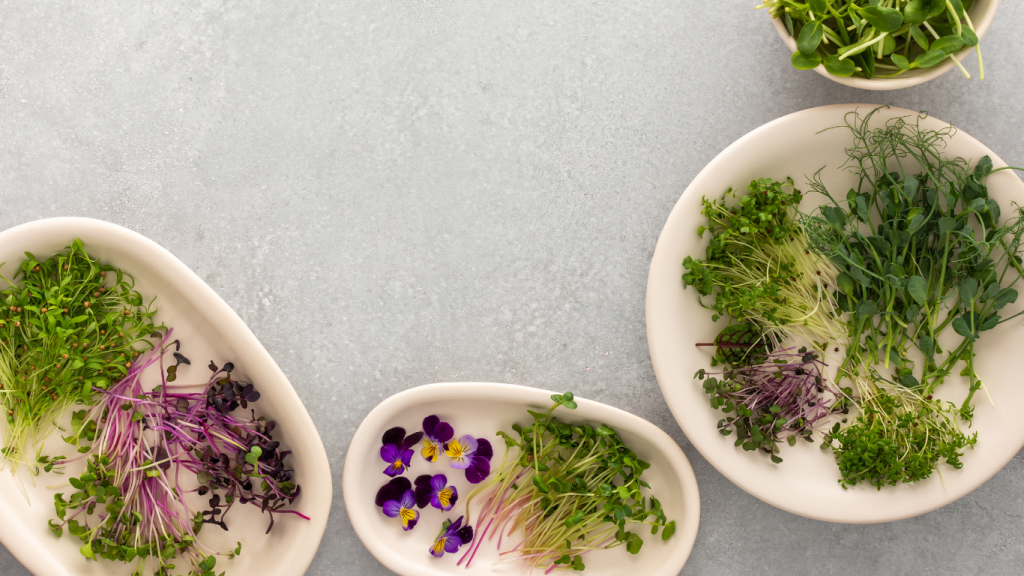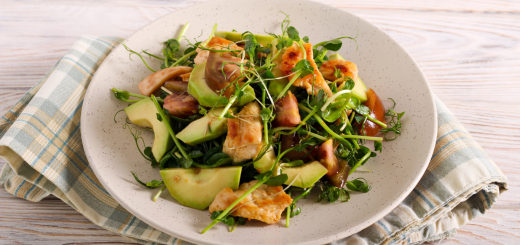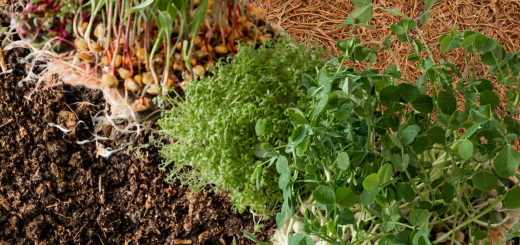Discover the Hidden Great Power of Microgreens

Hello, friends! Today we continue exploring the wonderful world of microgreens. Every day we learn something new about these tiny but mighty plants.
This time, we’re focusing on what fascinates us most: their nutritional value. Yes, they’re easy to grow and maintain—but what’s truly amazing is what they can do for your health!
According to a study published in the Journal of Future Foods by Yanqi Zhang, Zhenlei Xiao, Emily Ager, Lingyan Kong, and Libo Tan, microgreens are true nutrient powerhouses. They’re packed with vitamins, minerals, and antioxidants that can significantly boost your well-being.
Let’s break it down. We’ll clearly and simply explain what nutrients that they contain, how they benefit your body, and which varieties are richest in each.
Let’s start with vitamins
First things first—what exactly are vitamins? According to the Oxford English Dictionary, “a vitamin is defined as any of a group of substances essential in small amounts for healthy growth and development. These substances, which the body cannot synthesize and must obtain from food, are divided into two groups based on solubility: water-soluble (like the B complex and vitamin C) and fat-soluble (like vitamins A, D, E, and K).” With that definition in mind, let’s see which vitamins are present in microgreens.
The study shows that certain microgreens contain high levels of vitamin C, also known as ascorbic acid. This vitamin is well known for its powerful antioxidant effects and its essential role in collagen production. Now you understand why so many anti-aging creams are loaded with vitamin C! It also boosts your immune system—just like citrus fruits do. Yes, oranges and lemons are famous for a reason. And guess what? Many microgreens are just as rich in vitamin C.
A standout example is radish microgreens (Raphanus sativus). Other vitamin C-rich microgreens include cilantro (Coriandrum sativum), cucumber (Cucumis sativus), jute (Corchorus olitorius), fenugreek (Trigonella foenum-graecum), spinach (Spinacia oleracea), roselle (Hibiscus sabdariffa), Sicilian broccoli, and red beet (Beta vulgaris). And here’s the fun part: most of these contain more vitamin C than their fully grown counterparts.
Now let’s talk about minerals
(and no, not the kind you find in rocks)
These micronutrients are essential for the human body to function properly. They’re involved in building bones and teeth, producing hormones, and supporting your nervous and muscular systems. According to the study, rapini microgreens (a member of the Brassicaceae family) had the highest levels of zinc (Zn)—a crucial mineral for immune function, growth, and wound healing.
Copper (Cu) was found in greater concentrations in microgreens like bottle gourd and water spinach than in their adult forms. Copper plays a key role in red blood cell formation and the maintenance of blood vessels, nerves, and bones.
The study also identified selenium (Se)—an antioxidant that regulates thyroid function—found notably in small burnet and dandelion microgreens.
Microgreens are natural antioxidants: full defense mode
Finally, let’s talk about antioxidant phytochemicals: carotenoids, polyphenols, and anthocyanins. Yes, we know—they sound a bit like alien words. But let’s simplify it. These compounds help protect your cells from oxidative damage and aging, strengthen your immune system, and have even been linked to reducing the risk of heart disease and cancer.
Carotenoids, for example, are great for eye health and are found in microgreens like wheat, barley, red sorrel, cilantro, red cabbage, and jute.
Polyphenols and anthocyanins, on the other hand, are powerful antioxidants found in microgreens like broccoli and mustard.
So… why should you include microgreens in your diet?
As you can see, microgreens are absolutely packed with vitamins, minerals, and antioxidant phytochemicals.
So yes, these little green guys aren’t just cute, easy to grow and full of nutrients… Just taking a daily amount, they can transform your health!
They’re miniature superfoods—concentrating the best of nature in every single leaf.
Carlota
References
Zhang, Y., Xiao, Z., Ager, E., Kong, L., & Tan, L. (2021). Nutritional quality and health benefits of microgreens, a crop of modern agriculture. Journal of Future Foods, 1(1), 58–66. https://doi.org/10.1016/j.jfutfo.2021.07.001 Oxford University Press. (n.d.). Vitamin. In Oxford English Dictionary. Retrieved from https://www.oed.com/







